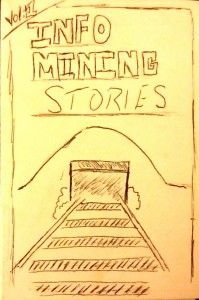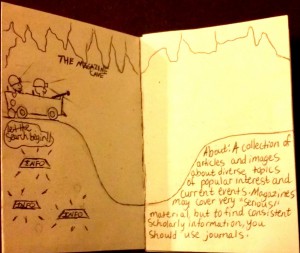In the video by Lessig, “Laws that Choke Creativity” many strong points were made about the the laws of copyright as a force that prevents the production of new works. One of the key points that Lessig made that stood out to me was that the use of intellectual property to recreate something new was not copying as it becomes something entirely different. This fact lead me to believe that copyright holders and enforcers alike, use these laws as a means to protect financial interests rather than promote innovation. Luckily the world is changing and heading into a direction where the advancement in digital technologies expose the blatant abuse of copyright laws. For example, teenagers can now create their own unique music videos by using pieces from other videos and combine it into one. The beauty of this is that, it is something that is popular in our culture and is growing everyday. I believe copyright holders should allow students and everyone in general to build on their ideas because copying meant doing everything the same way last time I checked. And be honest, everyone wants to be different, that’s how we evolve as a human race.
Author Archives: Orany M
Why a Zine?
As you know from our in-class discussion, zines are a great way to share information and interests. The reason I chose to create a zine was to experience the feeling of zine producers when they created a successful zine that benefited the target users. In doing so I was able to turn information about researching sources into something easier to read by incorporating fun comical drawings as seen above. Creating a zine is something that everyone should try at least once in their life time, you won’t regret it!
Alternative Press/Media
The reading “Critical Thinking, Deviant Knowledge, and the Alternative Press” by Thomas Eland talks about how we are at the mercy of major corporations and do not realize it. This may be caused by the mass media which is such a significant force in the shaping of our way of life, resulting in the negative aspects being filtered out. Some of these multinational corporations also control various aspects of mass media and profit, all in the the name of capitalism. A good example of this was mentioned in “Research Strategies” by William Badke where the average person that searches for something on Google, usually just chooses the information from the first results page. What this does, is limit our ability to do real research.
In the article “The History and Characteristics of Zines” by Fred Wright we take a step back and see that not everything has to be tainted by commercialism. Zine works produced are non commercial publications containing a wide variety of subjects but not limited to music, comics, fantasy/science-fiction. In the years of its early beginnings zines were more of a community of fandom related to a fixed set of interests. But it has since then evolved. The growing popularity of this form of print media can be attributed to it’s similarity social network for groups/interests on a website, but a more analog version. More importantly zines are not subject to censorship from gatekeepers like traditional media as it is self published work.
A cycle that creates balance
In the book Media Convergence: Networked Digital Media in Everyday Life by Graham Meikle, the author gives a brief account on the evolution of media and it’s convergence into this sort of entity that’s constantly improving. A great example of this combination of content, computing and communication is shown through the iTunes application. In the beginning it was used only for music but over time it has added media ranging from films to books and TV programs. Although we do not think about it, the innovation of various technologies resulting in the convergence of media is influenced significantly by how end users receives and interacts with the technology. For example the SMS text that is so popular today took off because of how the younger generation received it.
But with new technologies comes a need for regulation. This theory is seen in the introduction of the DVD. Although it was very good at the beginning for film studios, it quickly became difficult because users began to exploit this digital media by copying and sharing resulting in the rise of copyright regulators and hardware manufactures taking steps to prevent these exploitation of their property. Of course over time users will get around this minor roadblock because of differing ideas of intellectual property and the basic need to share. So in the end there is this constant cycle within content, computing and communication controlled not only by government policies and corporate interests, but also by end user interactions.
Can I have both?
In the article “The Reading Brain in the Digital Age”, Ferris Jabr writes about the unique advantages of reading on paper and the disadvantages of reading on digital screens supported by research studies across the nation. The results of these studies show that, because of the taxation on the brain from reading on screens we do not gain as much understanding when compared to reading on paper. The article also talks about how reading on screens may be better for scanning or short readings of digital texts while books are better for in depth reading. But why are we comparing when we can have both. Just like having CDs and digital music, the concept is the same, where CDs are like books and digital music is digital text. With that in mind, it’s been a while since the introduction of digital music and yet the CD is still relevant, so we see that nothing can take away the good old school–but to add on it because of the ever changing world. An example of this is given in the article “The Cobweb.” by Jill Lepore. Just like the famous library of Alexandria we now have a web of all webs which is a sort of digital version of the library of Alexandria. Thanks to this Internet archive there is now an alternate and/or additional way of storing, researching and finding information. Notice also that this Internet archive does not take away from a traditional library but uses it as a blueprint to create new avenues in this modern technological age.
The Impacts of Technology
In chapter one of Research Strategies by William Badke there is a strong account of how the emergence of Technology has influenced how the public goes about accessing and sharing information. This change is brought about by the existence of the revolutionary World Wide Web. In addition, an article published by New York Times entitled, “Study Says Technology Could Transform Society” by Robert Reinhold talks about how electronic information technologies such as video and teletext will transform our way of life in the future. Despite the many positives of these new technologies, we cannot deny the negatives that come with them. The cons include and are not limited to: the availability of poor quality information such as articles or websites written by non experts in the field, the existence of child pornography and terrorist websites and the gradual abandonment of traditional means of doing things. We can argue that the world is already approaching the era spoken about by Reinhold because people can earn a degree in the comfort of their homes as well as shop with just a click. Careful assessment must be made about the drawbacks to these innovations before implementation because they can indeed bring about positive change.




